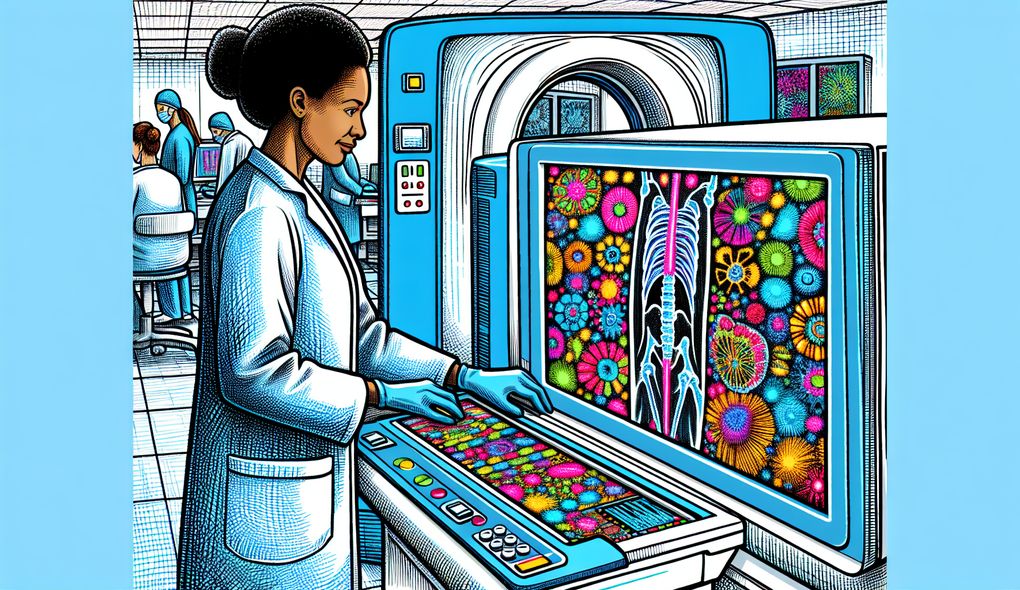What is your understanding of radiation safety protocols and procedures?
JUNIOR LEVEL

Sample answer to the question:
Radiation safety protocols and procedures involve measures taken to protect patients and healthcare professionals from unnecessary exposure to radiation. This includes using protective devices such as lead aprons and shields, following safe imaging techniques, and ensuring proper positioning of patients during procedures. It also involves proper maintenance and calibration of equipment, as well as monitoring radiation levels in the environment. Understanding these protocols is crucial to provide high-quality imaging while prioritizing safety.
Here is a more solid answer:
Radiation safety protocols and procedures are crucial in the field of fluoroscopy. As a Fluoroscopy Technologist, I understand the importance of protecting patients and healthcare professionals from unnecessary exposure to radiation. This involves following established protocols such as using lead aprons and shields, maintaining safe distances, and ensuring proper positioning during procedures. I am familiar with radiology information systems (RIS) and picture archiving and communication systems (PACS), which enhance the organization and accessibility of imaging data, including radiation dose records. In addition, my experience in positioning patients and selecting appropriate imaging techniques allows me to optimize image quality while minimizing radiation exposure. I am committed to regular equipment maintenance and calibration, as well as monitoring radiation levels in the environment to ensure safety standards are met.
Why is this a more solid answer?
The solid answer includes a better understanding of radiation safety protocols and procedures, as well as specific examples related to the job description and evaluation areas. The candidate demonstrates familiarity with radiology information systems and emphasizes the importance of regular equipment maintenance and calibration. However, the answer could be further improved by providing more specific details about the candidate's experience in applying radiation safety protocols and procedures.
An example of a exceptional answer:
Having worked as a Fluoroscopy Technologist for the past 2 years, I have developed a comprehensive understanding of radiation safety protocols and procedures. These protocols involve a combination of technical, administrative, and personal protective measures to minimize radiation exposure. For example, I have consistently used lead aprons, thyroid collars, and protective eyewear to shield patients and myself from radiation. I am proficient in using radiology information systems (RIS) and picture archiving and communication systems (PACS) to access patient records and maintain accurate documentation of radiation doses. My expertise in positioning patients and selecting appropriate imaging techniques has allowed me to obtain high-quality images while adhering to radiation safety guidelines. Furthermore, I actively participate in equipment maintenance and quality control to ensure accuracy and safety. Overall, my commitment to radiation safety protocols and procedures has been demonstrated through my track record of zero incidents or safety violations.
Why is this an exceptional answer?
The exceptional answer goes above and beyond in providing specific details and examples of the candidate's experience and expertise in radiation safety protocols and procedures. The candidate highlights their use of personal protective measures, such as lead aprons and thyroid collars, and emphasizes the importance of documentation and maintaining accurate records of radiation doses. They also mention their commitment to equipment maintenance and quality control. Additionally, the candidate showcases their excellent safety record, which further strengthens their understanding and application of radiation safety protocols and procedures.
How to prepare for this question:
- Review the basics of radiation safety, including principles, regulations, and best practices.
- Familiarize yourself with the specific radiation safety protocols and procedures used in fluoroscopy and general radiography.
- Stay updated on the latest advancements and guidelines in radiation safety.
- Reflect on your previous experiences and training related to radiation safety protocols and procedures, and be prepared to provide specific examples.
- Practice discussing radiation safety protocols and procedures in a clear and concise manner.
What are interviewers evaluating with this question?
- Knowledge of fluoroscopy and general radiography procedures
- Familiarity with radiology information systems (RIS) and picture archiving and communication systems (PACS)
- Skill in positioning patients and selecting proper imaging techniques

